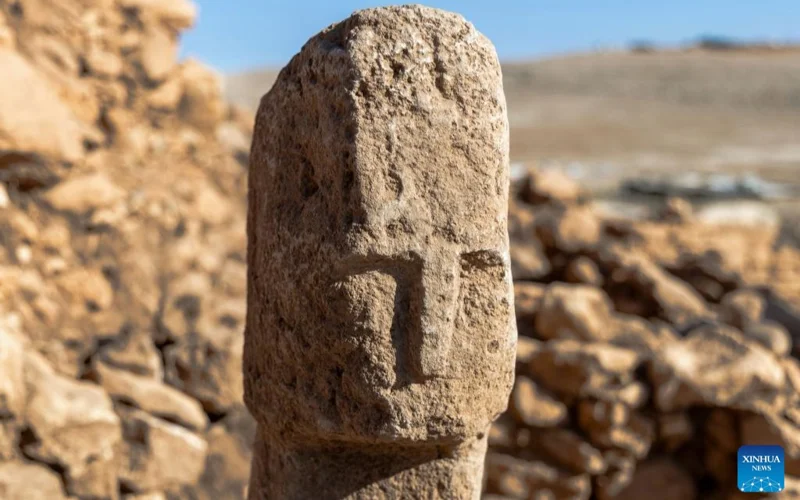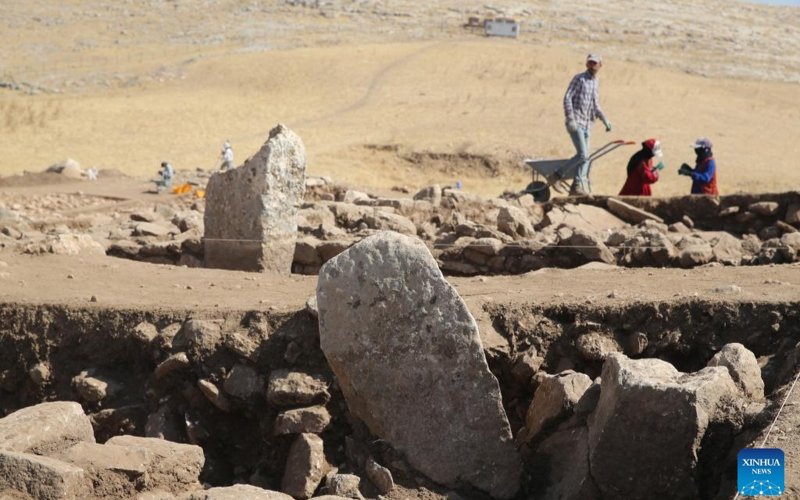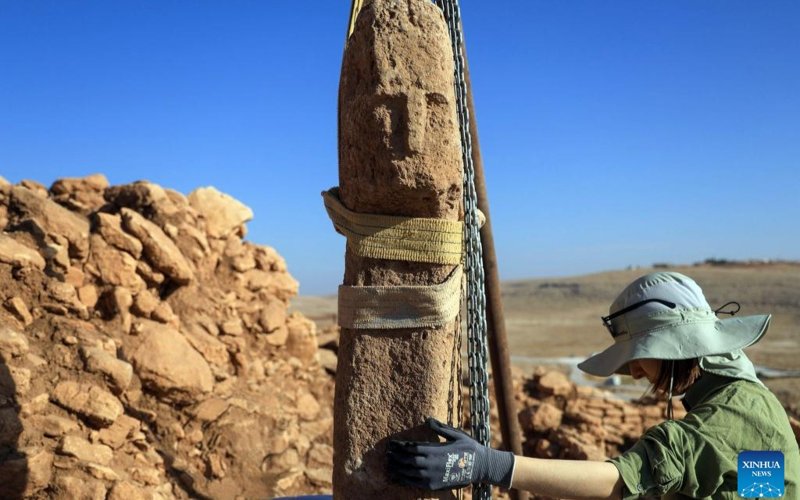12,000-year-old pillar carved with human face uncovered in SE Türkiye
A T-shaped pillar carved with a human face has been unearthed for the first time during recent excavations at the Karahantepe archaeological site in southeastern Türkiye, a cabinet minister announced on Monday, Xinhua reports.

The discovery was made during excavations under the Stone Hills Project, a comprehensive archaeological initiative exploring humanity's transition from a nomadic to a settled lifestyle and the evolution of belief systems around 12,000 years ago. Located in southeastern Anatolia, the project encompasses several Neolithic sites, including Gobeklitepe and Karahantepe.
"This artefact found in Karahantepe sheds light on the history of humanity as the first example of Neolithic man carving himself on a T-shaped column," Turkish Culture and Tourism Minister Mehmet Nuri Ersoy said in a statement.

The face, engraved on the upper part of the stone, features sharp contours, deep-set eyes, and a broad, block-shaped nose, stylistic traits similar to other human sculptures previously unearthed at Karahantepe. According to Türkiye's Ministry of Culture and Tourism, the find not only highlights the technical skill of early Neolithic societies but also sheds light on their capacity for abstraction and self-representation.
The newly discovered pillar marks a significant breakthrough in Neolithic studies, it added.

Until now, T-shaped pillars found at Karahantepe and nearby Gobeklitepe were known to feature carvings of arms and hands, leading researchers to interpret them as symbolic representations of humans, the ministry said. However, this is the first time a human face has been carved directly onto such a pillar, revealing a new dimension of symbolic and artistic expression among Neolithic communities.
The ministry noted that this discovery further supports the idea that T-shaped pillars served a symbolic role beyond structural or ritual purposes. For the first time, these monoliths appear to depict the human form in a more direct and personalized way, representing a critical step in the development of human imagery and spiritual thought.
